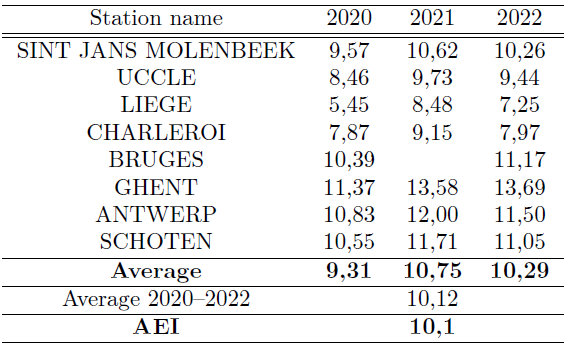Average Exposure Index (AEI)
The "average exposure index" (AEI) is included as an additional provision in European Directive 2008/50/EC in order to reduce the exposure of the population to PM2.5. The AEI is a national target value and is calculated as the three-year average of the PM2.5 concentrations measured in urban background stations. For this AEI, limit values of 20 μg/m³ and 15,2 µg/m³ to be attained by 2015 and 2020 respectively, have been established. For 2021 and later years no target value was established.
The AEI for 2020, 2021 and 2022 amounts to 10,1 µg/m³, well below the limit value for 2020.

